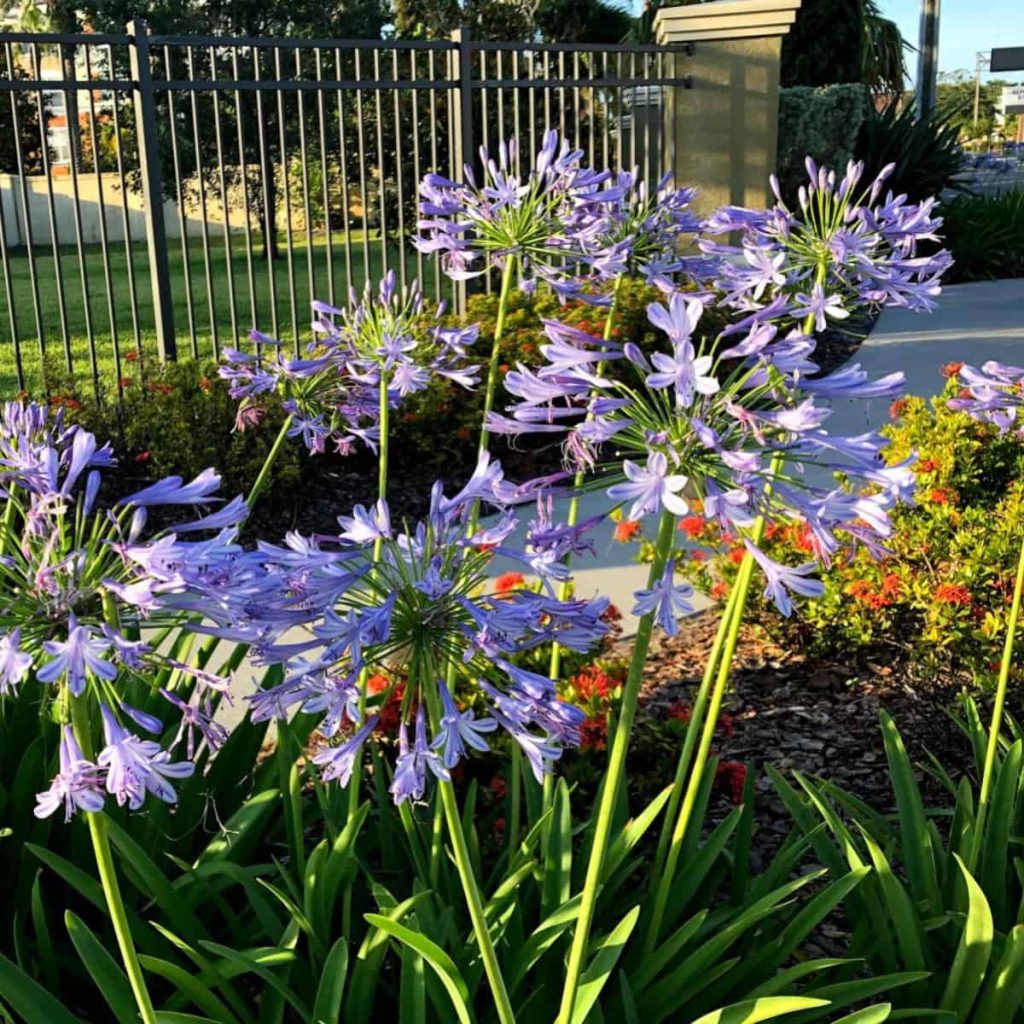Agapanthus, commonly known as the “Lily of the Nile,” is a stunning, hardy plant cherished for its lush, globe-shaped flower clusters and elegant, strap-like leaves. Originating in southern Africa, this perennial has become a garden favorite worldwide. Let’s dive into some fascinating facts about this plant that blends beauty with intrigue.
1. Not Actually a Lily
- Despite its nickname, Lily of the Nile, agapanthus is not a true lily. It belongs to the family Amaryllidaceae and is closely related to plants like daffodils and snowdrops. The name likely arose from its striking resemblance to lily flowers.
2. Name Derived From Greek
- The word “Agapanthus” comes from the Greek words agape (love) and anthos (flower), making it the “flower of love.” This romantic name mirrors the plant’s ornamental appeal and its frequent use in celebrations and decorative bouquets.
3. A Native of South Africa
- Agapanthus hails from South Africa, particularly the coastal and mountainous regions. It thrives in sunny, dry conditions, reflecting its adaptation to the Mediterranean-like climate of its homeland. There, it’s often found growing wild in rocky areas and grasslands.
4. A Symbol of Beauty and Prosperity
- In South African culture, agapanthus is associated with beauty, love, and prosperity. It has also been adopted in other regions as a good luck charm, with its flowers believed to ward off negative energy.
5. Medicinal Uses in Traditional Medicine
- Indigenous communities in South Africa have used agapanthus roots and leaves in traditional medicine. It’s believed to aid childbirth, treat colds, and even combat heart disease. However, modern studies on its medicinal efficacy are limited, and caution is advised as some parts of the plant can be toxic if consumed.
6. Pollinator Magnet
- Agapanthus flowers are highly attractive to pollinators like bees, butterflies, and even birds. Their vibrant colors and abundant nectar make them a vital addition to any garden aiming to support biodiversity.
7. Available in a Range of Colors
- While the most common hue for agapanthus flowers is a deep blue-purple, they also come in shades of white and pale blue. Hybrid varieties have expanded the palette, offering options for different garden themes.
8. Fire-Resistant Foliage
- In its native habitat, agapanthus has adapted to survive the frequent wildfires of the South African landscape. Its fleshy, moisture-rich leaves can act as a firebreak, protecting the plant’s core and roots.
9. Hardy Yet Versatile
- Agapanthus is celebrated for its resilience. It can thrive in containers or directly in garden beds, tolerates poor soil, and requires minimal watering once established. However, in colder climates, they need winter protection or must be grown as potted plants indoors.
Closing Thoughts
Agapanthus is much more than just a pretty garden addition. From its cultural significance to its role in supporting pollinators, this plant continues to enchant gardeners and nature enthusiasts alike.

